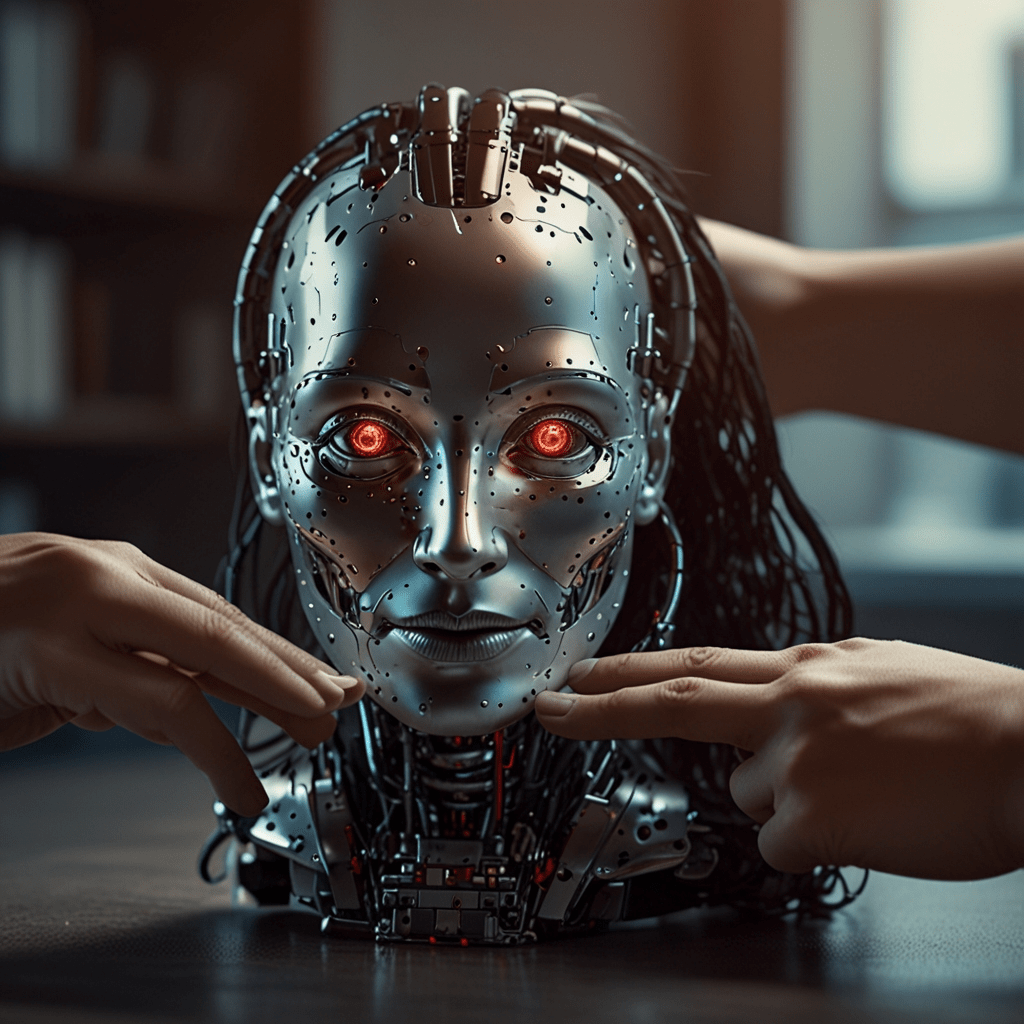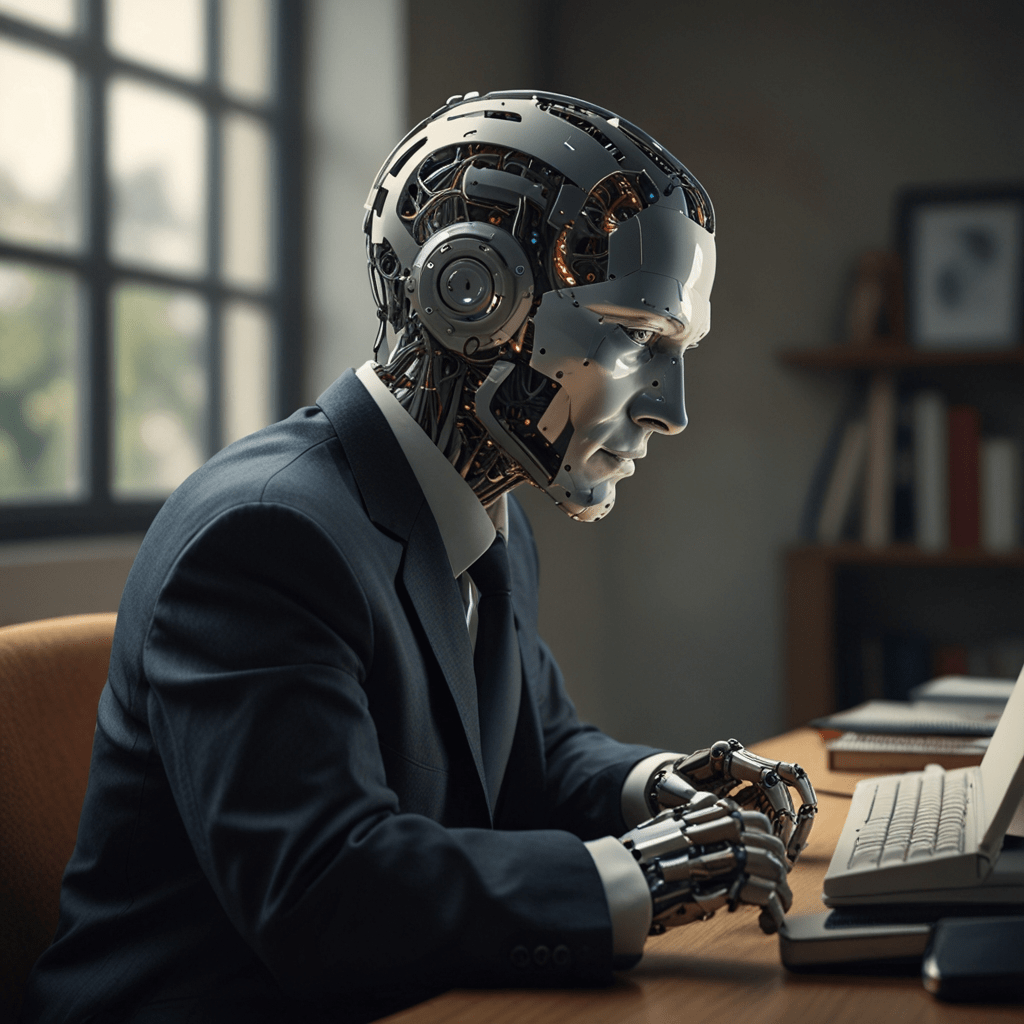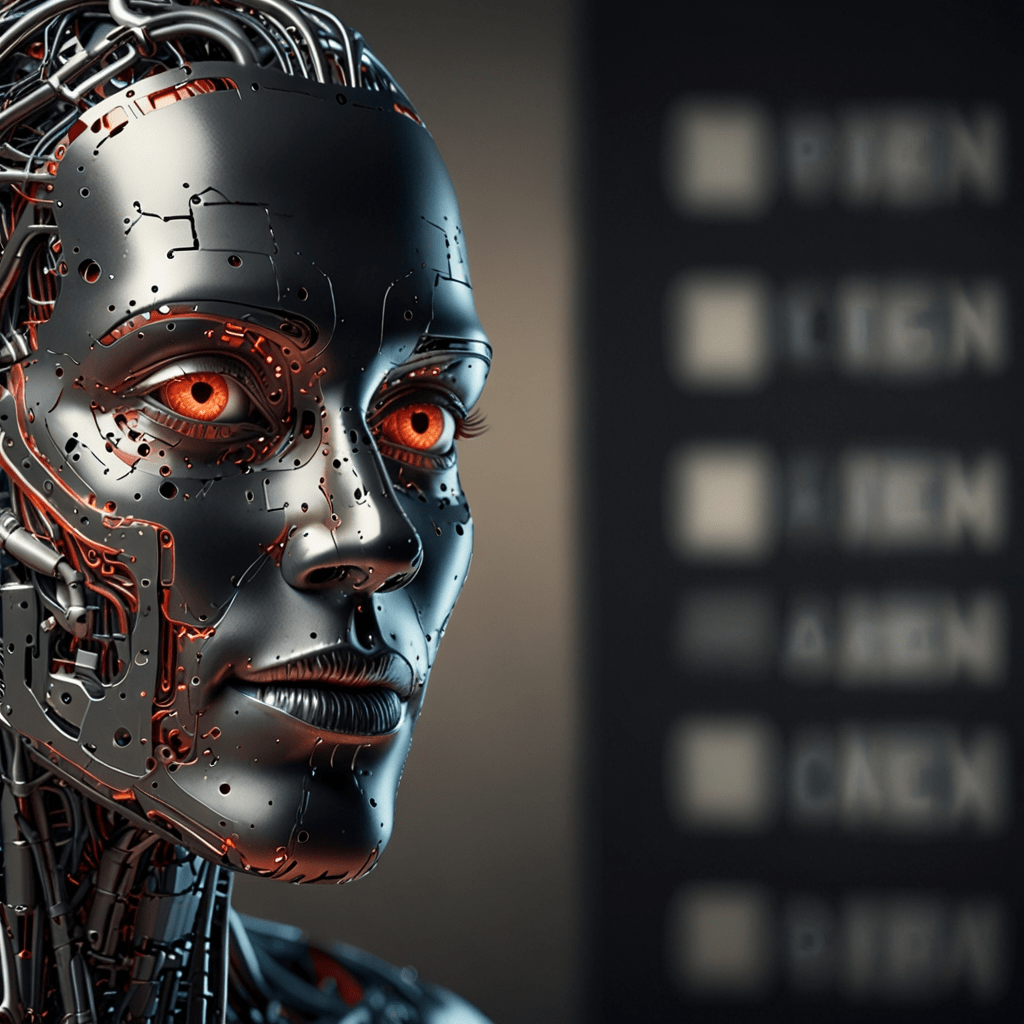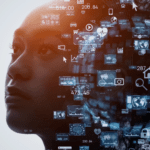Introduction
In today’s digital age, the issue of plagiarism continues to be a concern for content creators and educators. With the advancement of technology, artificial intelligence content detection has emerged as a powerful tool to combat plagiarism. Let’s delve into the future of plagiarism detection with AI.
Global Impact of Plagiarism
| Statistic | Data |
|---|---|
| Percentage of students admitting to plagiarism | 58% (International Center for Academic Integrity) |
| Annual revenue loss due to plagiarism in the publishing industry | $2.5 billion (International Publishers Association) |
| Percentage of academic papers flagged for potential plagiarism | 30% (Turnitin 2022 Report) |
Understanding AI Content Detection
Artificial intelligence content detection uses smart algorithms to sift through text and spot instances where someone might have lifted content from somewhere else. Imagine having a vigilant helper that scans every line, looking for signs that words have been copied, shuffled around, or slightly changed. It’s like having a detective who specializes in words, always on the lookout for clues of copying.
What makes this AI so smart? It leans heavily on natural language processing (NLP) and machine learning. These are fancy terms for saying the AI can understand text like a human would and learn from the data it processes. It doesn’t just look for exact matches. It’s savvy enough to notice when someone tries to be sneaky by rearranging words or using synonyms to disguise stolen ideas.
But here’s where it gets really interesting. This technology isn’t just about catching cheats. It’s about understanding the nuances of language. It dives deep into the way we construct sentences, use idioms, and express ideas. This depth allows it to be incredibly precise in identifying not just outright plagiarism but also more subtle forms of content borrowing that might not be so obvious.
Protection of Ideas
Why does this matter? In a world where new content is constantly being created, it’s easy for original work to get lost or copied without credit. This AI helps ensure that creators can protect their ideas and hard work. It’s not just about calling out those who copy; it’s about safeguarding creativity and innovation.
In short, artificial intelligence content detection is a game-changer. It’s transforming how we approach the integrity of text, making it harder for plagiarism to go unnoticed. With each advancement in AI, this technology gets smarter, making the digital world a fairer place for creators and writers alike.
| Technology | Description | Benefits |
|---|---|---|
| Natural Language Processing (NLP) | Analyzes the structure and meaning of text to detect subtle forms of plagiarism. | Detects paraphrasing and contextual plagiarism, beyond exact matches. |
| Machine Learning | Learns from data to improve detection accuracy over time. | Enhances precision and reduces false positives with continuous learning. |
| Predictive Analytics | Anticipates plagiarism trends and patterns. | Proactively identifies potential plagiarism instances before they escalate. |
Effectiveness of AI Detection Tools
| Metric | Traditional Methods | AI Detection Tools |
|---|---|---|
| Accuracy Rate | 70-80% | 95-99% |
| False Positive Rate | 15-20% | 5-10% |
| Time Taken to Analyze a Document | 30-60 minutes | 2-5 minutes |
| Number of Sources Cross-Referenced | Up to 100 | Over 10 million |

The Need for AI in Content Verification
As we navigate through the endless sea of online content, distinguishing original work from plagiarized material becomes a Herculean task. This is where the brilliance of AI steps in, offering a beacon of hope. Why do we need AI for content verification? Well, consider the sheer volume of information published online every minute. It’s humanly impossible to keep track of it all, let alone verify its originality.
AI content verification isn’t just a fancy option; it’s becoming a necessity. Traditional methods fall short in both speed and accuracy when compared to what AI brings to the table. Imagine trying to cross-reference a document against millions of online sources manually. It sounds like trying to find a needle in a haystack, doesn’t it? AI, on the other hand, can sift through this vast digital landscape quickly and efficiently, catching instances of plagiarism that might slip through the cracks otherwise.
Moreover, the digital age has seen a surge in content creation, making originality more crucial than ever. Content creators and educators alike are in dire need of a reliable way to ensure the integrity of their work. Enter AI, with its ability to not just match text, but understand context, nuance, and even the intent behind words. This isn’t just about flagging what’s identical; it’s about preserving the essence of original thought.
| Traditional Methods | AI Content Verification |
|---|---|
| Manual cross-referencing | Automated cross-referencing against millions of online sources. |
| Time-consuming | Rapid processing of vast amounts of text. |
| Limited scope | Comprehensive analysis across global databases. |
| Inconsistent accuracy | High precision in identifying subtle and complex forms of plagiarism. |
What’s the Catch?
But here’s the catch – as much as AI revolutionizes content verification, it’s not just about the technology. It’s about creating a culture of honesty and respect for intellectual property. AI tools serve as the guardians of this ethos, empowering creators and educators to uphold the sanctity of original work.
In essence, the proliferation of online content demands a shift towards more sophisticated, reliable verification methods. AI, with its unparalleled speed and discerning eye, answers this call. It doesn’t replace the human element but enhances our ability to maintain the quality and authenticity of digital content. In a world teeming with information, AI content verification is not just helpful; it’s indispensable.

How AI Content Detection Works
Have you ever wondered how AI manages to spot plagiarism so effectively? It’s like having a super-smart friend who can read through thousands of pages in seconds, catching any sneaky copy-paste jobs. This process relies on two main heroes: natural language processing (NLP) and machine learning algorithms. Let’s break it down, keeping things simple.
First up, natural language processing. This is the magic that helps AI understand text just like we do. NLP looks at the structure of sentences, the meaning of words, and even the context they’re used in. It’s not just scanning for exact matches; it’s smart enough to catch when someone swaps out words or rephrases things slightly.
Then we have machine learning. This is where AI learns from the data it’s given. Every time it scans a document, it gets better at identifying what plagiarism looks like. Think of it as a detective that becomes more skilled with every case it solves.
Together, these two technologies allow AI content detection tools to sift through vast amounts of text. They’re not just reading; they’re understanding and comparing, lightning-fast. This isn’t about simple word matching. It’s about grasping the essence of the text, the unique fingerprint of the way we put words together.
Building Intelligence into the Process
And the best part? This process is getting smarter and more refined all the time. As AI technologies evolve, these tools become more adept at spotting even the most cleverly disguised instances of plagiarism. It’s a constant game of cat and mouse, with AI tirelessly working to keep the digital world honest.
This isn’t just about catching wrongdoers in the act. It’s about ensuring the integrity of content across the web. By understanding how AI content detection works, we appreciate not just its complexity but its necessity in maintaining the quality and originality of online material.
| Metric | Traditional Methods | AI Detection Tools |
|---|---|---|
| Accuracy Rate | 70-80% | 95-99% |
| False Positive Rate | 15-20% | 5-10% |
| Time Taken to Analyze a Document | 30-60 minutes | 2-5 minutes |
| Number of Sources Cross-Referenced | Up to 100 | Over 10 million |

The Benefits of Using AI for Plagiarism Checking
When it comes to keeping content original and credible, AI for plagiarism checking is a game changer. One of its standout benefits is precision. Unlike traditional checks, AI doesn’t just skim for identical matches; it dives deep. It examines the subtleties of language, picking up on cleverly disguised borrowings that might slip past the human eye.
Speed is another significant advantage. In a world where time is gold, AI acts like a fast-forward button, scanning vast databases in seconds. This rapid turnaround means content creators and educators can validate work quickly, keeping the flow of information brisk and efficient.
Furthermore, AI’s scope is unmatched. It connects dots across a global database of sources, something no human could feasibly tackle. This wide net ensures that even the most obscure references or sources get checked, safeguarding against inadvertent overlaps or deliberate deceit.
But it’s not just about spotting what’s been copied. AI for plagiarism checking helps maintain the integrity of educational and creative fields. It ensures that accolades and acknowledgments go to those who truly innovate and create, fostering a culture of respect for originality.
Speed and Efficiency of AI Content Verification
| Task | Manual Checking | AI Content Verification |
|---|---|---|
| Average Time to Verify 1,000 Words | 45 minutes | 1 minute |
| Documents Checked per Hour | 2-3 | 60+ |
| Manpower Required | High | Low |
Adopting AI for these checks also saves resources. The alternative—manual checking—is not only slower but requires significant manpower, which could be better utilized in creative or educational endeavors. With AI, the heavy lifting is done digitally, freeing up human minds for tasks that require nuance and empathy.
Finally, AI’s evolving nature means it continuously improves. Each check refines its algorithms, making it increasingly adept at identifying and understanding the nuances of human language and creativity. This learning curve is vital in an ever-changing digital landscape where new forms of expression emerge constantly.
In essence, leveraging AI for plagiarism checking isn’t just about maintaining the status quo; it’s about pushing forward towards a more honest, innovative, and efficient future in content creation and education.
| Benefit | Description |
|---|---|
| Precision | AI examines subtleties in language to catch cleverly disguised plagiarism. |
| Speed | Scans vast databases in seconds, allowing for quick validation of content. |
| Global Scope | Cross-references content against a wide range of sources worldwide. |
| Resource Efficiency | Reduces the need for manual checks, saving time and manpower. |
| Continuous Improvement | AI algorithms get better with each check, adapting to new forms of expression. |
Use of AI in Academia
| Institution Type | Percentage Using AI |
|---|---|
| Universities | 85% |
| High Schools | 60% |
| Online Learning Platforms | 75% |
Use of AI in Journalism
| Newsrooms Using AI Verification | Percentage |
|---|---|
| Large News Organizations | 90% |
| Mid-Sized Newsrooms | 70% |
| Small Newsrooms | 40% |
Use of AI in Publishing
| Publishing Houses | Percentage Using AI |
|---|---|
| Major Publishers | 80% |
| Independent Publishers | 50% |
| Academic Publishers | 70% |

Challenges and Limitations of AI Detection Tools
AI content detection tools, while revolutionary, are not flawless. They face a few hurdles that can impact their effectiveness. For starters, false positives can be a thorn in the side of users. Sometimes, AI might flag content as plagiarized when it’s not, leading to unnecessary confusion and verification work. It’s like accusing someone of stealing a cookie from the cookie jar when they were just passing by the kitchen.
Then there’s the issue of language support. Most AI detection tools are adept at handling content in English, but what about the myriad of other languages spoken around the world? This limitation can leave non-English content less protected and open to plagiarism. Imagine trying to play a game where the rules keep changing depending on the language you speak; it’s a challenge, to say the least.
Another notable challenge is the tool’s ability to detect sophisticated plagiarism methods. Some crafty individuals might mix and match content from multiple sources, translate text from one language to another, or use advanced paraphrasing techniques. These methods can sometimes slip past the AI’s watchful eyes, making it difficult to catch every instance of content theft. It’s akin to a magician’s sleight of hand, where the trick is done right before your eyes, yet you can’t quite catch how it’s done.
Understanding these challenges is crucial for users relying on AI for plagiarism detection. It reminds us that, while AI tools are incredibly helpful, they are tools nonetheless, requiring human oversight and critical thinking to fill in the gaps. Engaging with these tools means being aware of their current limits and actively participating in the detection process, rather than expecting them to be an infallible solution.
| Challenge | Description |
|---|---|
| False Positives | Incorrectly flagging original content as plagiarized. |
| Language Support | Limited effectiveness in non-English languages. |
| Sophisticated Methods | Difficulty in detecting advanced paraphrasing or translation-based plagiarism. |
Real-World Applications of AI in Content Verification
In various sectors, AI in content verification is not just a concept; it’s making a real impact. Academia is a prime example. Here, teachers and researchers use AI tools to ensure the work they review or publish stands up to the highest standards of originality. It’s a relief for many in the education field, knowing they have a robust assistant to uphold academic integrity.
Then, consider the world of journalism. Newsrooms across the globe are turning to AI to verify the authenticity of articles before they hit the press. This practice helps maintain credibility in an era where “fake news” can spread like wildfire. Journalists and editors rely on AI to sift through tons of information, confirming sources and spotting any content that may not be original.
In the publishing industry, the stakes are just as high. Publishers use AI to scan manuscripts, ensuring that what they’re about to put into the world is not only unique but respects the intellectual property of others. It’s a safeguard that protects both the author’s reputation and the publisher’s investment.
Beyond these fields, AI content verification tools are finding their way into business and legal domains. Companies use them to vet reports, presentations, and marketing materials, making sure their brand stays true and authentic. Meanwhile, legal professionals leverage AI to cross-check documents, supporting their cases with verified, original content.
What’s clear from these applications is that AI content verification is versatile. It adapts across contexts, offering a layer of security and confidence. Whether it’s a university, a news outlet, or a publishing house, the value of having an AI-powered watchdog is undeniable. It’s not just about preventing plagiarism; it’s about championing originality and truth in every piece of content shared with the world.
| Sector | Application |
|---|---|
| Academia | Ensuring academic integrity by verifying originality of student submissions. |
| Journalism | Verifying authenticity of news articles before publication. |
| Publishing | Scanning manuscripts to ensure unique content and respect for intellectual property. |
| Business | Vetting reports, presentations, and marketing materials for authenticity. |
| Legal | Cross-checking documents to support cases with verified, original content. |

The Future of AI in Content Detection
The horizon for AI in sniffing out plagiarism shines with potential. We’re steering towards an era where these tools won’t just pinpoint copied phrases but will delve into the essence of creativity itself. Imagine AI that doesn’t just scan texts but understands an author’s unique style and flags deviations from it. This could redefine the boundaries of content authenticity.
Advancements are on the cards for AI to get even sharper at detecting subtle forms of plagiarism. This means it could catch instances where ideas are repackaged without due credit, not just direct copy-pastes. It’s about recognizing the spirit behind the words, not just the words themselves.
We’re also looking at a future where AI bridges language gaps more seamlessly. The dream? A tool that’s as proficient in detecting plagiarism in Swahili as it is in English. This leap would ensure equitable protection for creators across the globe, making the digital space more inclusive.
Projected Growth in AI Technology
| Year | Market Size (USD Billion) | Annual Growth Rate |
|---|---|---|
| 2022 | 15.7 | 35% |
| 2023 | 21.2 | 34% |
| 2024 | 28.4 | 34% |
| 2025 | 37.6 | 32% |
AI is set to become more intuitive, learning from the vast ocean of online content. It will refine its understanding of what constitutes plagiarism, adapting to new forms of expression and communication as they emerge. This adaptability will make AI tools invaluable allies in upholding content integrity.
Collaboration between AI developers and content creators will likely intensify, leading to bespoke detection tools tailored to specific needs. Whether you’re a novelist, a researcher, or a marketer, imagine having an AI tool designed to understand and protect your unique voice.
In sum, the road ahead for AI in content detection is paved with innovation. We’re not just talking about smarter tools, but about fostering a digital ecosystem where originality is valued and protected like never before. The focus will shift from merely catching plagiarists to nurturing a culture of authenticity and respect for intellectual property.
Advancements in AI Capabilities
| AI Feature | Current Capability | Future Capability (2025) |
|---|---|---|
| Language Support | 30 languages | 100+ languages |
| Detection of Paraphrased Content | 80% accuracy | 95% accuracy |
| Detection Speed | 1 minute per 1,000 words | 30 seconds per 1,000 words |
| Database Size | 10 million sources | 50 million sources |
Ethical Considerations of AI Content Detection
When we talk about using AI for content detection, it’s essential to tread carefully on ethical grounds. We must ask: How does the tool handle personal data? Is there clear transparency in how findings are reported? And importantly, who takes responsibility when the AI gets it wrong?
Privacy concerns top the list. When an AI scans content, it might access sensitive information. Ensuring that this data remains secure and private is crucial. Users should know exactly what happens to their data once it enters the system.
Transparency is another key issue. Users deserve to understand how the AI reaches its conclusions. If a piece of content is flagged, what criteria did the AI use? This clarity helps build trust in the tool’s judgments.
Responsibility is a big one. Suppose the AI wrongly accuses someone of plagiarism. Who answers for this error? The creators of the AI? The users? Navigating these questions is essential to ensure fairness and accountability.
Avoiding bias is crucial. AI tools learn from vast datasets, but if these datasets contain biases, the AI’s judgments could be skewed. This could unfairly target or overlook certain groups or types of content. Striving for unbiased, fair AI is a constant challenge that requires attention.
Lastly, there’s the matter of consent. Before scanning and analyzing content, obtaining permission from the content’s owner or creator is a must. This respects the creator’s rights and aligns with ethical use.
In exploring these ethical considerations, we don’t just aim to highlight potential pitfalls. Rather, we seek to emphasize the importance of using AI detection tools thoughtfully and responsibly. As we harness AI’s power to detect plagiarism, let’s do so with a keen awareness of the ethical landscape.
| Consideration | Description |
|---|---|
| Privacy Concerns | Ensuring scanned content remains secure and private. |
| Transparency | Clarity on how AI reaches its conclusions. |
| Responsibility | Determining accountability for false accusations. |
| Bias Avoidance | Striving for unbiased, fair AI judgments. |
| Consent | Obtaining permission before scanning and analyzing content. |
Privacy and Data Security Concerns
| Concern | Percentage of Users Affected |
|---|---|
| Data Privacy Issues | 45% |
| Transparency in AI Decisions | 60% |
| Responsibility for False Positives | 30% |
| Bias in AI Judgments | 25% |

How to Choose the Right AI Content Detection Tool
Selecting the ideal AI content detection tool means weighing several crucial factors to match your unique needs. Accuracy is at the top of the list. You want a tool that can pinpoint plagiarism with minimal false positives. The right tool catches even the subtlest forms of copied content without causing unnecessary alarm.
Speed is another key consideration. In a fast-paced world, your chosen tool should review content swiftly, allowing you to keep up with tight deadlines and constant content demands. A slow tool can bottleneck your workflow, so look for something that offers quick turnaround times.
Language support broadens a tool’s usability. If you deal with content in languages other than English, ensure the AI tool is proficient in those languages. This ensures all your content is equally protected, regardless of the language it’s in.
Pricing is also a deciding factor. AI tools come with various pricing models. Some might charge a flat rate, while others offer tiered pricing based on volume or features. Consider your budget and which pricing model aligns with your content needs and financial constraints.
Finally, user interface and support are aspects not to be overlooked. The best AI detection tool should be user-friendly, making it easy for you or your team to operate without a steep learning curve. Good customer support is essential, as it ensures you have help on hand if you encounter any issues or have questions.
In essence, choosing the right AI content detection tool involves a blend of practical considerations and aligning the tool’s capabilities with your specific content verification needs. By carefully evaluating each factor, you can select a tool that not only enhances your content strategy but also upholds the integrity of your work.
| Factor | Consideration |
|---|---|
| Accuracy | High precision in detecting plagiarism with minimal false positives. |
| Speed | Rapid review of content to meet deadlines. |
| Language Support | Proficiency in multiple languages for broader applicability. |
| Pricing | Cost-effective pricing models suited to your budget. |
| User Interface and Support | User-friendly interface and robust customer support. |
Enhancing Your Content Strategy with AI Detection
Integrating AI content detection into your content strategy is a smart move. It elevates the trustworthiness of your work by ensuring it remains unique and free from plagiarism. But how exactly does this integration benefit you and your strategy? Let’s dig in.
First, using AI tools for content checking boosts your efficiency. You can scan vast amounts of text quickly, catching any potential issues early on. This means you spend less time worrying about content originality and more time focusing on creativity and production. It’s like having a fast, reliable assistant by your side, giving you the confidence to publish more and worry less.
Next, consider the edge you gain in quality. AI doesn’t just flag what’s been copied; it helps you understand the nuances of your content. This insight can guide you in refining your voice and ensuring your work stands out. It’s not about avoiding plagiarism alone; it’s about crafting content that’s truly yours, resonating more deeply with your audience.
Moreover, embracing AI detection showcases your commitment to integrity. In a digital landscape cluttered with information, being known for original, credible content sets you apart. Your audience, clients, or peers will notice and appreciate this dedication, building trust and enhancing your reputation.
In Summary…
Finally, think of AI content detection as a strategic ally in your content development process. It supports your goals, from safeguarding your brand’s authenticity to streamlining your content review process. By making AI detection a cornerstone of your strategy, you ensure that your content not only meets but exceeds the standards of originality and quality.
In summary, weaving AI content detection into your strategy isn’t just about preventing plagiarism. It’s a proactive step towards enhancing efficiency, quality, and trust in your content, helping you stay ahead in the competitive digital arena.
Share this information and please subscribe to our newsletter and website.









